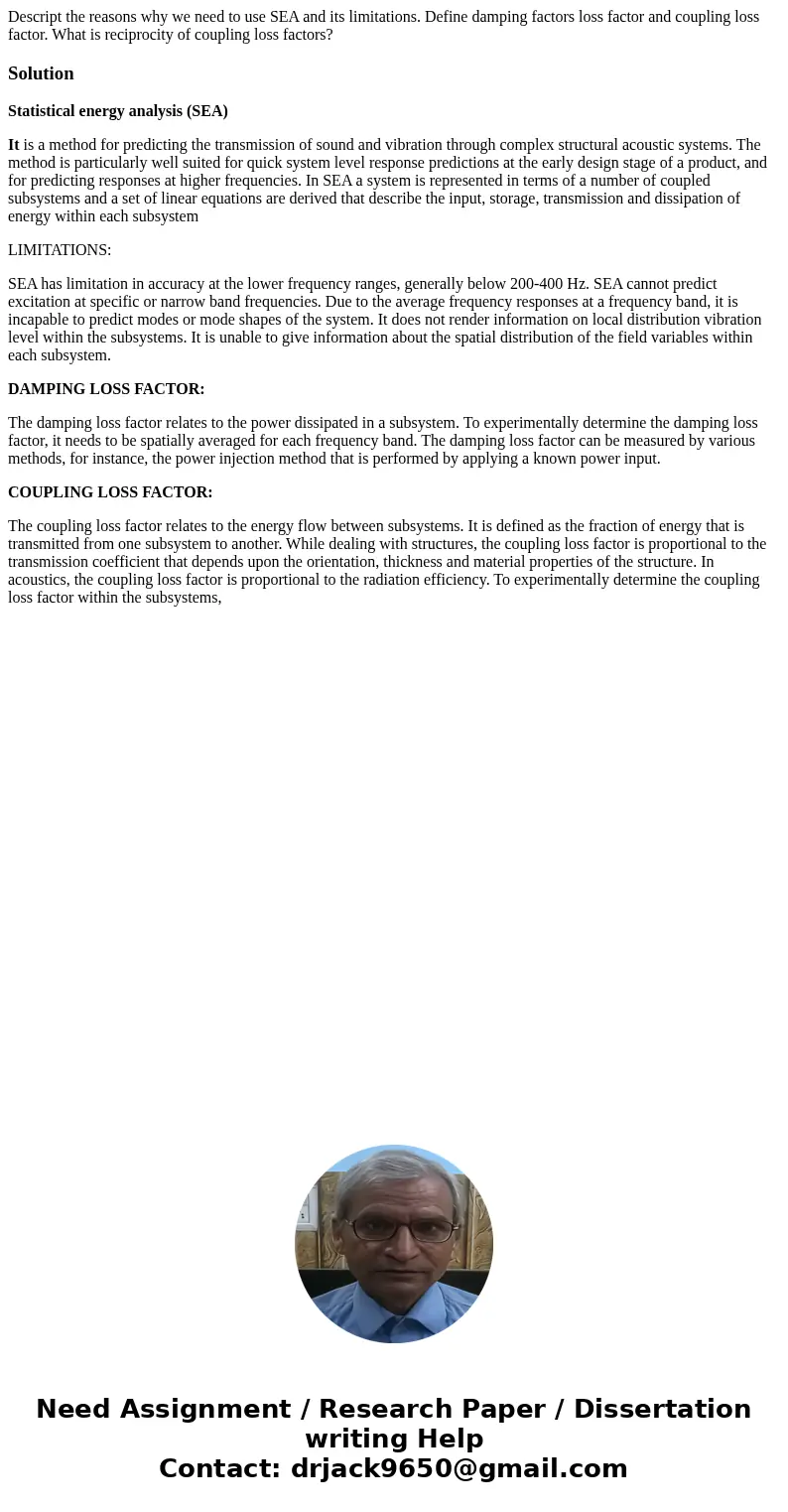Descript the reasons why we need to use SEA and its limitati
Solution
Statistical energy analysis (SEA)
It is a method for predicting the transmission of sound and vibration through complex structural acoustic systems. The method is particularly well suited for quick system level response predictions at the early design stage of a product, and for predicting responses at higher frequencies. In SEA a system is represented in terms of a number of coupled subsystems and a set of linear equations are derived that describe the input, storage, transmission and dissipation of energy within each subsystem
LIMITATIONS:
SEA has limitation in accuracy at the lower frequency ranges, generally below 200-400 Hz. SEA cannot predict excitation at specific or narrow band frequencies. Due to the average frequency responses at a frequency band, it is incapable to predict modes or mode shapes of the system. It does not render information on local distribution vibration level within the subsystems. It is unable to give information about the spatial distribution of the field variables within each subsystem.
DAMPING LOSS FACTOR:
The damping loss factor relates to the power dissipated in a subsystem. To experimentally determine the damping loss factor, it needs to be spatially averaged for each frequency band. The damping loss factor can be measured by various methods, for instance, the power injection method that is performed by applying a known power input.
COUPLING LOSS FACTOR:
The coupling loss factor relates to the energy flow between subsystems. It is defined as the fraction of energy that is transmitted from one subsystem to another. While dealing with structures, the coupling loss factor is proportional to the transmission coefficient that depends upon the orientation, thickness and material properties of the structure. In acoustics, the coupling loss factor is proportional to the radiation efficiency. To experimentally determine the coupling loss factor within the subsystems,

 Homework Sourse
Homework Sourse